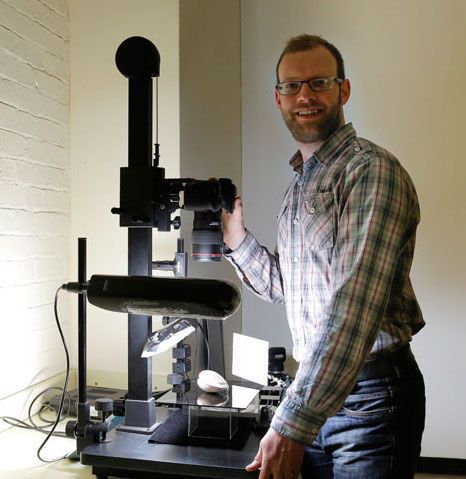Step into the 3rd Dimension
, 23 September 2016
One of the many challenges curatorial departments face, especially within the natural sciences, is making specimens that are stored in our collections accessible to the wider public in a form where they can get a real sense of the what these specimens actually look and feel like. There is no real substitute for having specimens on display in the galleries and being able to see the texture, shape and scale at first hand, but this not always possible as gallery space is limited and only a tiny proportion of the 3 million specimens we hold in our natural sciences collections can ever be out on display at any one time.
The Museum is undertaking a large-scale project to make our collections visible online in terms of collection data and images, but an exciting technique is now allowing us to produce and display 3D models of our specimens in fantastic detail, which is probably the closest you can get to having the specimen in front of you.
3D scanning has been around for sometime now. Back in 2012, the Geology Department (now part of the Natural Sciences Department) was a lead partner in a JISC-funded project to digitise all Type fossils held in the UK. Many of our type fossils were scanned in 3D during this project and are avalible to view on the website (3d-fossils.ac.uk). However, the technology for 3D scanning has moved on rapidly in the time since, and we are fortunate to now have the one of the the most up-to-date 3D scanners available at present - the Artec Spider HD. Our new scanner allows us the capture detail beyond the level we could previously achieve, and in much less time.
The Museum now has a presence on the popular 3D model web platfom SketchFab, which is host to thousands of models produced by the public as well as other museums and galleries across the world. Making the 3D models we produce available on the is platform allows us to promote our collections to a large audience who although may already be engaged in 3D modelling, may not necessarily be engaging with museums.
We are still learning the capabilities (and limitations) of our new scanner, and discovering which specimens and objects are best suited for scanning, but over the coming months more models will be added to the museum sketchfab site and will begin to be integrated into our own online collection websites.
